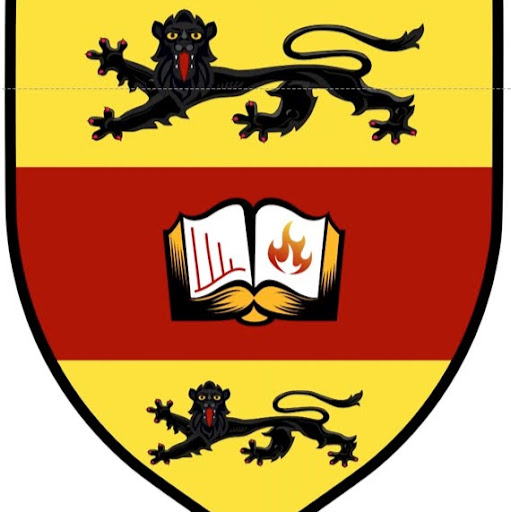David R Goodlett
age ~65
from Baltimore, MD
- Also known as:
-
- David Goodlett Robinson
- Phone and address:
-
1431 Bolton St, Baltimore, MD 21217
206 301-9198
David Goodlett Phones & Addresses
- 1431 Bolton St, Baltimore, MD 21217 • 206 301-9198
- 4411 29Th Ave W, Seattle, WA 98199 • 206 301-9198
- 7726 9Th Ave NW, Seattle, WA 98117
- Richland, WA
- Wake Forest, NC
- Phillipsburg, NJ
- Flemington, NJ
- 1431 Bolton St, Baltimore, MD 21217 • 206 465-6165
Work
-
Company:PataiginJan 2015
-
Position:Founder
Education
-
Degree:Doctorates, Doctor of Philosophy
-
School / High School:North Carolina State University1986 to 1992
-
Specialities:Philosophy
Skills
Mass Spectrometry • Biochemistry • Protein Chemistry • Proteomics • Lc Ms • Analytical Chemistry • Science • Molecular Biology • Hplc • Bioinformatics • Chemistry • Genomics • Lifesciences
Industries
Biotechnology
Isbn (Books And Publications)
-
Yugoslav Worker Emigration 1963-1973: Government Policy And Press Coverage
view source -
Author:David Eugene Goodlett
-
ISBN #:0773453989
Name / Title
Company / Classification
Phones & Addresses
THREE RHYTHMS ENTERTAINMENT GROUP, LC
MIAMI VALLEY USBC ASSOCIATION
Deurion, LLC
Commercial Physical Research · Analytical Instruments, Nsk
Commercial Physical Research · Analytical Instruments, Nsk
5341 Ballard Ave NW, Seattle, WA 98107
Resumes

Editor
view sourceLocation:
Baltimore, MD
Industry:
Biotechnology
Work:
Pataigin
Founder
University of Washington Jan 2004 - Dec 2012
Professor
Deurion Jan 2004 - Dec 2012
Founder
Institute For Systems Biology Mar 2000 - Dec 2003
Director Proteomics Laboratory
Auburn University 1982 - 1986
Students
Founder
University of Washington Jan 2004 - Dec 2012
Professor
Deurion Jan 2004 - Dec 2012
Founder
Institute For Systems Biology Mar 2000 - Dec 2003
Director Proteomics Laboratory
Auburn University 1982 - 1986
Students
Education:
North Carolina State University 1986 - 1992
Doctorates, Doctor of Philosophy, Philosophy Bs, Ms, Phd 1978 - 1991
Robert E. Lee High School
Auburn University
Doctorates, Doctor of Philosophy, Philosophy Bs, Ms, Phd 1978 - 1991
Robert E. Lee High School
Auburn University
Skills:
Mass Spectrometry
Biochemistry
Protein Chemistry
Proteomics
Lc Ms
Analytical Chemistry
Science
Molecular Biology
Hplc
Bioinformatics
Chemistry
Genomics
Lifesciences
Biochemistry
Protein Chemistry
Proteomics
Lc Ms
Analytical Chemistry
Science
Molecular Biology
Hplc
Bioinformatics
Chemistry
Genomics
Lifesciences
Us Patents
-
Methods For Quantification And De Novo Polypeptide Sequencing By Mass Spectrometry
view source -
US Patent:6829539, Dec 7, 2004
-
Filed:Apr 13, 2001
-
Appl. No.:09/835072
-
Inventors:David R. Goodlett - Seattle WA
Andrew Keller - Seattle WA -
Assignee:The Institute For Systems Biology - Seattle WA
-
International Classification:G01N 3348
-
US Classification:702 20, 435 6
-
Abstract:The invention provides a method of determining an amino acid sequence of a parent polypeptide. The method consists of: (a) obtaining mass spectra of two or more differentially labeled polypeptide fragments of a parent polypeptide; (b) assigning a mass and a weighting characteristic to two or more paired signals having a difference in mass corresponding to an integer value of said differential label, the weighting characteristic combining properties of each signal within said paired signals; (c) selecting from the mass spectra a paired signal having the assigned mass and a weighting characteristic distinguishable from non-peptide signals, the assigned mass indicating the mass of a polypeptide fragment within the spectra; (d) determining the difference in mass of the polypeptide fragments; (e) assigning the mass differences a satisfying amino acid name, and (f) orienting the assigned amino acid names. Also provided is a method of determining the amino acid sequence of a polypeptide. The method consists of: (a) constructing a graph from mass spectra of two or more differentially labeled polypeptides, the graph comprising a node with mass m, number of labels n, intensity i, and mass differential of labels ; (b) creating a node corresponding to a paired signal having masses of about m and about m+n , and (c) adding a labeled weighted directed edge to the graph between any two nodes corresponding to a mass of an amino acid, the labeled weighted directed edge combining properties of the paired signals.
-
Methods And Systems For Mass Spectrometry
view source -
US Patent:8415619, Apr 9, 2013
-
Filed:Nov 15, 2011
-
Appl. No.:13/296793
-
Inventors:David R. Goodlett - Seattle WA, US
Scott R. Heron - East Kilbride, GB
Jonathan Cooper - Glasgow, GB -
Assignee:University of Glascgow - Glasgow
-
International Classification:H01J 49/26
G01N 23/00 -
US Classification:250288, 250281, 250282, 4351731, 4351736, 435461
-
Abstract:The present invention relates generally to mass spectrometry. The present invention relates more particularly to methods and systems for use in mass spectrometric identification of a variety of analytes, including high molecular weight species such as proteins. One embodiment of the invention is a method for analyzing an analyte. The method includes nebulizing a suspension of the analyte in a solvent with a surface acoustic wave transducer; and performing mass spectrometry on the nebulized suspension. The surface acoustic wave transducer can be used, for example, to transfer non-volatile peptides and proteins (as well as other analyztes, such as oligonucleotides and polymers) to the gas phase at atmospheric pressure. Nebulization using surface acoustic waves can be conducted in a discontinuous or pulsed mode, similar to that used in MALDI, or in a continuous mode, as in ESI.
-
Rapid And Quantitative Proteome Analysis And Related Methods
view source -
US Patent:20020115056, Aug 22, 2002
-
Filed:Dec 26, 2000
-
Appl. No.:09/748783
-
Inventors:David Goodlett - Seattle WA, US
-
International Classification:C12Q001/00
G06F019/00
G01N033/48
G01N033/00 -
US Classification:435/004000, 436/086000, 702/019000
-
Abstract:The invention provides methods for identifying polypeptides. The method can include the steps of simultaneously determining the mass of a subset of parent polypeptides from a population of polypeptides and the mass of fragments of the subset of parent polypeptides; comparing the determined masses to an annotated polypeptide index; and identifying one or more polypeptides of the annotated polypeptide index having the determined masses. The method can further include the steps of determining one or more additional characteristics associated with one or more of the parent polypeptides; comparing the determined characteristics to the annotated polypeptide index; and optionally repeating the steps one or more times, wherein a set of characteristics is determined that identifies a parent polypeptide as a single polypeptide in the annotated polypeptide index. The method can additionally include the step of quantitating the amount of the identified polypeptide in a sample containing the polypeptide.
-
Methods For Rapid And Quantitative Proteome Analysis
view source -
US Patent:20020119490, Aug 29, 2002
-
Filed:Dec 26, 2000
-
Appl. No.:09/748793
-
Inventors:Ruedi Aebersold - Mercer Island WA, US
David Goodlett - Seattle WA, US -
International Classification:G01N033/53
G06F019/00
G01N033/48
G01N033/50 -
US Classification:435/007100, 702/019000, 436/086000
-
Abstract:The invention provides methods for identifying a polypeptide. The method can include determining two or more characteristics associated with the polypeptide, or a fragment thereof, one of the characteristics being mass of a fragment of the polypeptide, the fragment mass being determined by mass spectrometry; comparing the characteristics associated with the polypeptide to an annotated polypeptide index; and identifying one or more polypeptides in the annotated polypeptide index having the characteristics. The method can further include the steps of determining one or more additional characteristics associated with the polypeptide; comparing the determined characteristics to the annotated polypeptide index; optionally repeating the steps one or more times, wherein a set of characteristics is determined that identifies a single polypeptide in the annotated polypeptide index, and optionally quantitating the amount of identified polypeptide in a sample containing the polypeptide. The invention also provides methods for generating a polypeptide identification index.
-
Methods For Rapid And Quantitative Proteome Analysis
view source -
US Patent:20060008851, Jan 12, 2006
-
Filed:Sep 9, 2005
-
Appl. No.:11/223269
-
Inventors:Rudolf Aebersold - Mercer Island WA, US
David Goodlett - Seattle WA, US -
Assignee:Institute for Systems Biology - Seattle WA
University of Washington - Seattle WA -
International Classification:G01N 33/53
-
US Classification:435007100
-
Abstract:The invention provides methods for identifying a polypeptide. The method can include determining two or more characteristics associated with the polypeptide, or a fragment thereof, one of the characteristics being mass of a fragment of the polypeptide, the fragment mass being determined by mass spectrometry; comparing the characteristics associated with the polypeptide to an annotated polypeptide index; and identifying one or more polypeptides in the annotated polypeptide index having the characteristics. The method can further include the steps of determining one or more additional characteristics associated with the polypeptide; comparing the determined characteristics to the annotated polypeptide index; optionally repeating the steps one or more times, wherein a set of characteristics is determined that identifies a single polypeptide in the annotated polypeptide index, and optionally quantitating the amount of identified polypeptide in a sample containing the polypeptide. The invention also provides methods for generating a polypeptide identification index.
-
Rapid And Quantitative Proteome Analysis And Related Methods
view source -
US Patent:20060009915, Jan 12, 2006
-
Filed:Sep 12, 2005
-
Appl. No.:11/225265
-
Inventors:David Goodlett - Seattle WA, US
-
Assignee:Institute of Systems Biology - Seattle WA
-
International Classification:G06F 19/00
G01N 33/00 -
US Classification:702019000, 436086000
-
Abstract:The invention provides methods for identifying polypeptides. The method can include the steps of simultaneously determining the mass of a subset of parent polypeptides from a population of polypeptides and the mass of fragments of the subset of parent polypeptides; comparing the determined masses to an annotated polypeptide index; and identifying one or more polypeptides of the annotated polypeptide index having the determined masses. The method can further include the steps of determining one or more additional characteristics associated with one or more of the parent polypeptides; comparing the determined characteristics to the annotated polypeptide index; and optionally repeating the steps one or more times, wherein a set of characteristics is determined that identifies a parent polypeptide as a single polypeptide in the annotated polypeptide index. The method can additionally include the step of quantitating the amount of the identified polypeptide in a sample containing the polypeptide.
-
Methods For Quantification And De Novo Polypeptide Sequencing By Mass Spectrometry
view source -
US Patent:20060020393, Jan 26, 2006
-
Filed:Dec 2, 2004
-
Appl. No.:11/004570
-
Inventors:David Goodlett - Seattle WA, US
Andrew Keller - Seattle WA, US -
Assignee:The Institute for Systems Biology - Seattle WA
-
International Classification:G01N 33/53
-
US Classification:702019000, 436086000
-
Abstract:The invention provides a method of determining an amino acid sequence of a parent polypeptide. The method consists of: (a) obtaining mass spectra of two or more differentially labeled polypeptide fragments of a parent polypeptide; (b) assigning a mass and a weighting characteristic to two or more paired signals having a difference in mass corresponding to an integer value of said differential label, the weighting characteristic combining properties of each signal within said paired signals; (c) selecting from the mass spectra a paired signal having the assigned mass and a weighting characteristic distinguishable from non-peptide signals, the assigned mass indicating the mass of a polypeptide fragment within the spectra; (d) determining the difference in mass of the polypeptide fragments; (e) assigning the mass differences a satisfying amino acid name, and (f) orienting the assigned amino acid names. Also provided is a method of determining the amino acid sequence of a polypeptide. The method consists of: (a) constructing a graph from mass spectra of two or more differentially labeled polypeptides, the graph comprising a node with mass m, number of labels n, intensity i, and mass differential of labels δ; (b) creating a node corresponding to a paired signal having masses of about m and about m+nδ, and (c) adding a labeled weighted directed edge to the graph between any two nodes corresponding to a mass of an amino acid, the labeled weighted directed edge combining properties of the paired signals.
-
Methods For Identifying Bacteria
view source -
US Patent:20120197535, Aug 2, 2012
-
Filed:Jan 3, 2012
-
Appl. No.:13/342694
-
Inventors:David R. Goodlett - Seattle WA, US
Robert K. Ernst - Silver Spring MD, US
Ying Sonia Ting - Seattle WA, US
Yu Chieh Philip Kao - Seattle WA, US -
International Classification:G06F 19/00
H01J 49/26 -
US Classification:702 19
-
Abstract:The present invention provides methods for identifying bacteria by analysis of lipid A and/or lipoteichoic acid structure and/or mass spectrometry ionization patterns.
Classmates

David Goodlett
view sourceSchools:
Glades Day High School Belle Glade FL 1970-1974
Community:
Kenneth Watson, Terri Patterson, Gaye Glisson

David Goodlett | Middleto...
view source
Middletown High School, M...
view sourceGraduates:
David Goodlett (1966-1970),
John Burks (1961-1965),
froso smith (1997-2001),
Lisa Gingerich (1985-1989),
Anna Banks (1967-1971),
dwight Streeter (1975-1979)
John Burks (1961-1965),
froso smith (1997-2001),
Lisa Gingerich (1985-1989),
Anna Banks (1967-1971),
dwight Streeter (1975-1979)

Glades Day High School, B...
view sourceGraduates:
David Goodlett (1970-1974),
Karen Harris (1972-1976),
Scott Clark (1993-1997),
Daniel Bartholomew (1998-2002)
Karen Harris (1972-1976),
Scott Clark (1993-1997),
Daniel Bartholomew (1998-2002)
Googleplus

David Goodlett
Lived:
Seattle, WA
Work:
University of Maryland, Baltimore - Professor (2013)
University of Washington - Professor (2004-2013)
Institute for Systems Biology - Director Proteomics (2000-2003)
University of Washington - Professor (2004-2013)
Institute for Systems Biology - Director Proteomics (2000-2003)
Education:
Auburn University - Chemistry, North Carolina State University - Biochemistry

David Goodlett
Plaxo

David R. Goodlett
view sourceUniversity of Washington
Youtube

David Goodlett
view source
David Goodlett
view source
David Goodlett
view source
David Goodlett
view source
David Goodlett
view source
David Goodlett
view source
David Goodlett
view source
David Goodlett
view sourceMyspace

David Goodlett
view source
David Goodlett
view sourceGet Report for David R Goodlett from Baltimore, MD, age ~65






